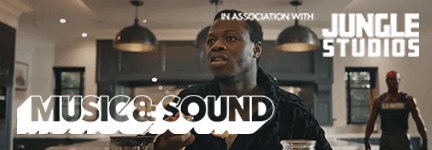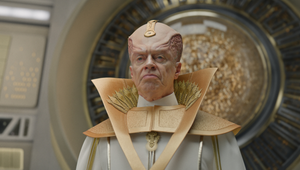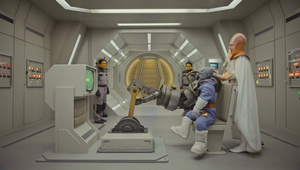
Cameron Milne on the Murky World Where Sound Meets Music

Asking a sound designer to pick just one niche craft obsession is nothing short of torture. The audio community is notorious for being 'gear heads' when it comes to recording equipment, DAW software, plugins, synths, operating systems, automation, mixing desks, outboard gear, headphones, cables, digital, analogue, and blah blah blah.
Of course, I could discuss one of the many powerful noise-reduction plugins I use daily or one of my favourite multiband dynamic processors that sits across the majority of my mixes. However, I have chosen to discuss one of my favourite creative processes - working in the murky world where sound design and music meet.
As sound designers, we don’t always get the chance to intricately merge the music and sound design from the very beginning of a project as one would want. Due to deadlines and time restrictions, sound designers and composers often have to work simultaneously on a project, only combining forces towards the end of the production. When I have been supplied the music track, be it composed or from a library, prior to my track lay, it is a joy because I can blend the elements of my sound design to work seamlessly with the sonic elements within the music from the get-go. Pitching my SFX in harmony with the musical key, matching the sinewave forms and synthesis choices of the composers, and syncing with the rhythmic elements - all of these tools help me achieve greater detail and clarity in my projects and create a glue that is hard to emulate when given a music track later in the game.
When I started my audio journey creating electronic music, I didn’t realize I was using sound design when I was producing my music tracks, creatively lifting them with samples of street atmospheres or obscure dialogue from vintage films. To be honest, I didn’t even know what sound design was! This early musical experimentation planted a seed that bears fruit in my sound design mixes to this day, and I assume it will continue to do so well into the future. Of course, I am not a pioneer in this realm of blending sound design with musical elements, and I'm sure it harks back to the very beginning of sound design itself. Nevertheless, I find it an extremely powerful process and one that gives almost any project the extra edge of professionalism and punch. Even as I write this article, I am implementing this exact process in a current project, designing the sound of a flying robot to tonally match a well-known music track.
With this in mind, I was lucky enough to work on a project for an upcoming gaming company. They are creating a game that combines drones and Formula One racing, putting the player behind the wheel of a high-tech racing drone. Of course, sound designing an early trailer for this style of project was amazing. Creating drone sounds, engine roars, bespoke whooshes, and digital elements - it had it all. Oh, and one more thing, I was able to compose the music for it!
This gave me the perfect opportunity to apply the 'musical sound design hybrid' process from the very beginning, giving me control over the finest details. At points, I don’t even know where my sound design stops and the music begins... which is exactly the desired effect!
In this particular instance, I used a very powerful software synth called Omnisphere to craft the majority of the sound design, alongside the gorgeous U-He synth, Diva.
Again, this is not my tool or my process. This concept is used by all sound designers and, I am sure, by most composers too. If you are starting your journey in sound design, there is a high chance you have some musical talent or at least an interest in music and audio in general. Do not let that talent or interest in music disappear. The concept I have discussed in this article is just one way that a small amount of musical knowledge can help you immensely in your sound design work. When working on new projects, ask questions about music; ask if there is an early WIP track. This way, you can craft your sound design to work in sympathy with the music from the start and deliver an awesome mix at the end.















